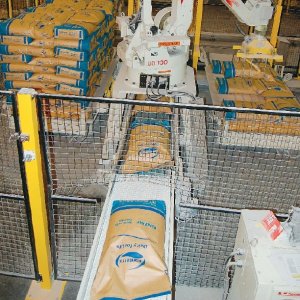That season an initial $7/kgMS forecast was followed by a $6.60/kgMS revision in late September and a final figure of $5.20/kgMS.
"I don't think we're going to see a repeat of 2008-9," ANZ National Bank rural economist Con Williams told Dairy News.
This revision is later, so more product will already be sold at "pretty healthy" prices compared to long-term averages. There are also signs supply growth in the US and Europe is slowing.
Europe's debt situation is a worry, as is the slowdown in the Chinese economy, though there's "been a big emphasis in the dairy industry to diversify their markets in the last couple of years," says Williams.
Nonetheless, China now accounts for 20% of dairy exports. "Our next market along from that is a lot smaller."
Last season strong buying from India and Russia drove up prices towards the end of the year. This time that demand's not there and China has only been back in the market for the past couple of GlobalDairyTrade events, he notes.
Rabobanks' Hayley Moynihan says the gradual easing in markets is more or less as anticipated; a strong start to the Southern Hemisphere's season is coinciding with continued growth in northern hemisphere exports.
"The [northern and southern hemisphere] milk flows have overlapped more than usual this year. That's boosted supply availability. There would need to be some exceptional buying to absorb all that."
In the same period last year China was very active, as was Russia due to drought. This year that demand's not there, though extra demand from China "may still come," she notes.
Talks of a slowdown in the Asian giant's economy are not too great a concern for dairy markets, she believes.
"As it slows down that may impact consumption a bit but from a dairy point of view there's likely to be minimal impact. Domestic feed costs, and consequently the cost of domestic production, are still quite high."
Globally, demand for dairy is "still quite robust, though perhaps a little more patchy particularly in the US and EU. Consumption has plateaued at best and in the US liquid milk consumption has declined. That's putting more milk onto the world market, and it's hard to see that changing.
"But the emerging markets are still performing well, particularly the Middle East and Latin America. South East Asia is more patchy. Some markets are going well. Others are feeling the pinch."
She too doesn't see this season playing out like 2008-9 when an initial forecast of $7/kgMS gave way to a final figure of $5.20/kgMS. "A lot of the sharp crash then was due to liquidity and credit availability. We can't rule that out given the situation in Europe, but it seems unlikely."
Fonterra chief financial officer, Jonathan Mason, echoes that. Commodity and stock markets are not coming off such as spike as in 2008, and they're not likely to fall nearly as far, he believes.
"Now we've got wholemilk powder at about $US3500/t compared to a peak of about $US4400/t six months ago." In 2008 the peak was more like $US5200/t and the following trough hit $US1800/t.
"There's some softness there but nothing like we had three years ago. Now, if tomorrow Italy and Greece default on their debt, then we'd all have to watch and see how it plays out but it doesn't feel like GFC 1."
















